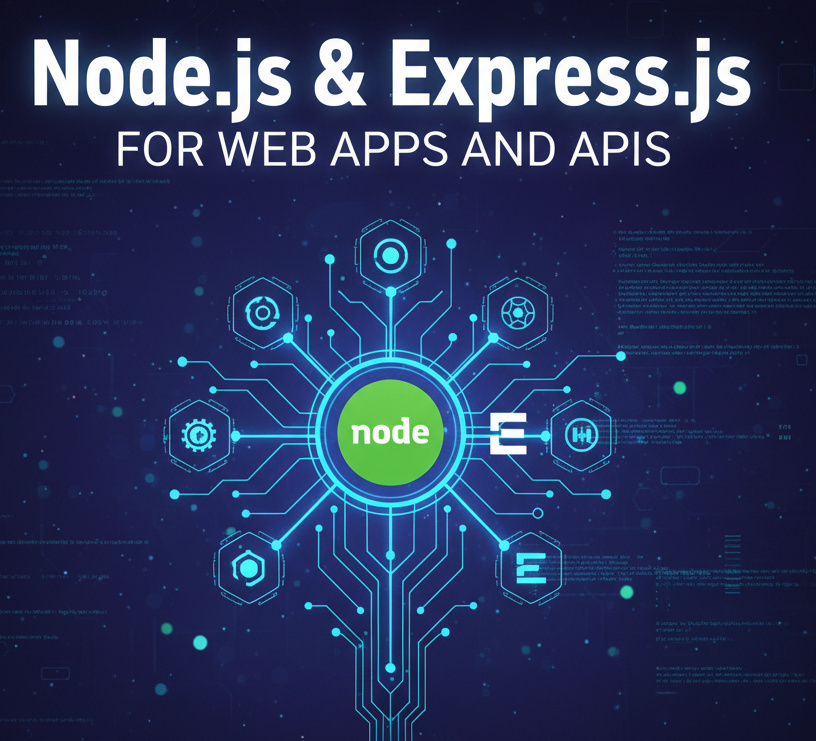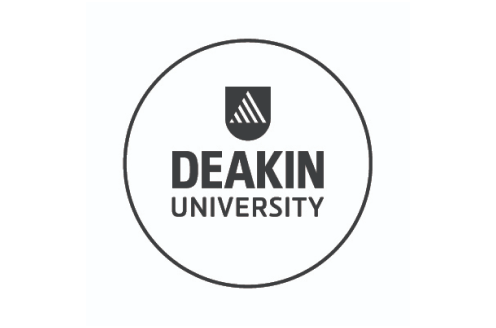- Great Learning
- Free Courses
- Big Data
Earn a certificate & get recognized
Hive Hands on
Get your hands-on Hive tool to process, query and analyze structured data with a free online course.
Instructor:
Mr. Raghu Raman A VHive Hands on
2K+ learners enrolled so far
Stand out with an industry-recognized certificate
10,000+ certificates claimed, get yours today!
Get noticed by top recruiters
Share on professional channels
Globally recognised
Land your dream job

Skills you will gain
Hive Basic
Key Highlights
Get free course content
Master in-demand skills & tools
Test your skills with quizzes
About this course
Hive is a Hadoop Stack component, an open-source data warehouse infrastructure designed to process structured data in Hadoop. Resided on top of Hadoop, it summarizes big data and makes it easier to query and analyze data. Hive was developed by Facebook and later sold to Apache. It runs queries in Hive Query Language (HQL) like SQL, which internally converts into map-reduce functions. It uses Data Definition Language (DDL), Data Manipulation Language (DML), and user-defined functions to query, process, mine, and report the data.
This free Hive Hands-On online course will provide insights into different concepts to help you understand the subject better. You will be walked through various topics stretching from introduction to Hive and then will walk you through concepts like its partition. The course will also demonstrate to you two case studies for your better understanding. Hive has a similar syntax to MySQL database and can perform operations such as reading, writing, and managing big data tables and storing them in HDFS or any other data sources. However, Hive cannot perform insert, delete, and update operations.
Course outline
Introduction to Hive Hands-On
Hive is a data warehouse used to support interaction between the user and HDFS. This course will give you a demonstration using sample problem statements for your better understanding.
Partitions in Hive
Partitioning in Hive is a process of segregating the data in the table using values such as date, department and city in the columns.
Case Study Demo 1
This section demonstrates Analyzing NASA WebServer logs with Apache Hive for your understanding.
Case Study Demo 2
This section demonstrates to you the query processing and analyzing using different models and objects in Hive.
Get access to the complete curriculum once you enroll in the course
Stand out with an industry-recognized certificate
10,000+ certificates claimed, get yours today!
Get noticed by top recruiters
Share on professional channels
Globally recognised
Land your dream job

Hive Hands on

3.0 Hours
Beginner
2K+ learners enrolled so far
Get free course content
Master in-demand skills & tools
Test your skills with quizzes
Refer and earn
Get learning discounts up to $20
Learner reviews of the Free Courses
4.0
What our learners enjoyed the most
Skill & tools
67% of learners found all the desired skills & tools
Our course instructor

Mr. Raghu Raman A V
Adjunct Faculty (Big Data, Machine Learning and AWS)
Big Data Expert
Raghu is a Big Data and AWS expert with over a decade of training and consulting experience in AWS, Apache Hadoop Ecosystem including Apache Spark.
He has worked with global customers like IBM, Capgemini, HCL, Wipro to name a few as well as Bay Area startups in the US.
Frequently Asked Questions
Will I receive a certificate upon completing this free course?
Is this course free?
Will I get a certificate after completing this Hive Hands On free course?
Yes, you will get a certificate of completion for Hive Hands On after completing all the modules and cracking the assessment. The assessment tests your knowledge of the subject and badges your skills.
How much does this Hive Hands On course cost?
It is an entirely free course from Great Learning Academy. Anyone interested in learning the basics of Hive Hands On can get started with this course.
Can I sign up for multiple courses from Great Learning Academy at the same time?
Yes, you can enroll in as many courses as you want from Great Learning Academy. There is no limit to the number of courses you can enroll in at once, but since the courses offered by Great Learning Academy are free, we suggest you learn one by one to get the best out of the subject.
Why choose Great Learning Academy for this free Hive Hands On course?
Great Learning Academy provides this Hive Hands On course for free online. The course is self-paced and helps you understand various topics that fall under the subject with solved problems and demonstrated examples. The course is carefully designed, keeping in mind to cater to both beginners and professionals, and is delivered by subject experts. Great Learning is a global ed-tech platform dedicated to developing competent professionals. Great Learning Academy is an initiative by Great Learning that offers in-demand free online courses to help people advance in their jobs. More than 5 million learners from 140 countries have benefited from Great Learning Academy's free online courses with certificates. It is a one-stop place for all of a learner's goals.
What are the steps to enroll in this Hive Hands On course?
Enrolling in any of the Great Learning Academy’s courses is just one step process. Sign-up for the course, you are interested in learning through your E-mail ID and start learning them for free online.
Will I have lifetime access to this free Hive Hands On course?
Yes, once you enroll in the course, you will have lifetime access, where you can log in and learn whenever you want to.
What is HQL?
HQL is Hive Query Language, similar to that of MySQL database. It performs operations such as read, write, and manage big data tables and store them in HDFS or any other data sources through Data Definition Language (DDL), Data Manipulation Language (DML), and user-defined functions to query, process, mine and report the data.
What are the differences between HQL and SQL?
SQL codes are lengthier than HQL; however, SQL is faster than non-native HQL, but HQL can operate as quickly as SQL if the cache size is set right. SQL relational database model, but HQL is a combination of object-oriented programming with the relational database. SQL manipulates data in the tables and modifies it. HQL functions with objects and their properties.
How do I learn HiveQL?
To start learning HiveQL, you will need to be strong with Hive basics. If you are unfamiliar with it, enroll in Great Learning Academy's free Hive Basics course. It is even better if you know MySQL. With that understood well, you can easily be able to learn querying and analyzing using HiveQL.
How do I run Hive commands online?
You can run Hive commands online by following these simple steps.
Log in to your web console using cloudxlab credentials > Launch Hive on web console > Check the list of all database types> Create your own database > Check metadata of your database > Run your commands using ${env: USER}
What are partitions in Hive?
Partitioning in Hive is dividing the table into different parts based on the values in a specific column. This is done to organize the tables. Also, it is easier to query a portion of data using partitioning. The columns are partitioned based on values such as date, department, city, etc.
How many types of partitions can be applied in Hive?
Different types of partitioning in Hive are Dynamic partitioning and Static partitioning. Dynamic partitioning is used when a single insert is given to the partition table, and it loads the data from a non-partitioned table. It takes a little longer than static partitioning to load the data. Also, dynamic partitioning is suitable when massive amounts of data are stored in the table.
Become a Skilled Professional with Pro Courses
Gain work-ready skills with guided projects, top faculty and AI tools, all at an affordable price.


View Course

Included with Pro+ Subscription

View Course

Included with Pro+ Subscription
.jpg)
View Course

Included with Pro+ Subscription


View Course

Included with Pro+ Subscription


View Course

Included with Pro+ Subscription

View Course

Included with Pro+ Subscription

View Course

Included with Pro+ Subscription

View Course

Included with Pro+ Subscription

View Course

Included with Pro+ Subscription

View Course

Included with Pro+ Subscription
.jpg)
View Course

Included with Pro+ Subscription


View Course

Included with Pro+ Subscription



View Course

Included with Pro+ Subscription

View Course

Included with Pro+ Subscription


View Course

Included with Pro+ Subscription


View Course

Included with Pro+ Subscription


View Course

Included with Pro+ Subscription


View Course

Included with Pro+ Subscription




View Course

Included with Pro+ Subscription


View Course

Included with Pro+ Subscription

View Course

Included with Pro+ Subscription


View Course

Included with Pro+ Subscription
 (1).png)
View Course

Included with Pro+ Subscription


View Course

Included with Pro+ Subscription

View Course

Included with Pro+ Subscription

View Course

Included with Pro+ Subscription

View Course

Included with Pro+ Subscription

View Course

Included with Pro+ Subscription


View Course

Included with Pro+ Subscription

View Course

Included with Pro+ Subscription

View Course

Included with Pro+ Subscription

View Course

Included with Pro+ Subscription

View Course

Included with Pro+ Subscription
.png)
View Course

Included with Pro+ Subscription
 (1).jpg)
View Course

Included with Pro+ Subscription
.png)
View Course

Included with Pro+ Subscription
.png)
View Course

Included with Pro+ Subscription
.png)
View Course

Included with Pro+ Subscription
.png)
View Course

Included with Pro+ Subscription
.png)
View Course

Included with Pro+ Subscription

View Course

Included with Pro+ Subscription
.png)
View Course

Included with Pro+ Subscription

View Course

Included with Pro+ Subscription
.png)
View Course

Included with Pro+ Subscription
.png)
View Course

Included with Pro+ Subscription
.png)
View Course

Included with Pro+ Subscription

View Course

Included with Pro+ Subscription

View Course

Included with Pro+ Subscription


.png)

View Course

Included with Pro+ Subscription



.png)
View Course

Included with Pro+ Subscription


View Course

Included with Pro+ Subscription


View Course

Included with Pro+ Subscription


View Course

Included with Pro+ Subscription
.jpg)

Popular


View Course

Included with Pro+ Subscription

View Course

Included with Pro+ Subscription
.jpg)
View Course

Included with Pro+ Subscription


View Course

Included with Pro+ Subscription


View Course

Included with Pro+ Subscription

View Course

Included with Pro+ Subscription

View Course

Included with Pro+ Subscription

View Course

Included with Pro+ Subscription
AI & Generative AI

View Course

Included with Pro+ Subscription

View Course

Included with Pro+ Subscription
.jpg)
View Course

Included with Pro+ Subscription


View Course

Included with Pro+ Subscription



View Course

Included with Pro+ Subscription

View Course

Included with Pro+ Subscription
Microsoft Courses


View Course

Included with Pro+ Subscription


View Course

Included with Pro+ Subscription


View Course

Included with Pro+ Subscription


View Course

Included with Pro+ Subscription




View Course

Included with Pro+ Subscription
IT & Software


View Course

Included with Pro+ Subscription

View Course

Included with Pro+ Subscription


View Course

Included with Pro+ Subscription
 (1).png)
View Course

Included with Pro+ Subscription


View Course

Included with Pro+ Subscription

View Course

Included with Pro+ Subscription

View Course

Included with Pro+ Subscription

View Course

Included with Pro+ Subscription

View Course

Included with Pro+ Subscription

View Course

Included with Pro+ Subscription

View Course

Included with Pro+ Subscription
.png)
View Course

Included with Pro+ Subscription
.png)
View Course

Included with Pro+ Subscription

View Course

Included with Pro+ Subscription

View Course

Included with Pro+ Subscription

View Course

Included with Pro+ Subscription

View Course

Included with Pro+ Subscription

View Course

Included with Pro+ Subscription

View Course

Included with Pro+ Subscription

View Course

Included with Pro+ Subscription
.png)
View Course

Included with Pro+ Subscription
.jpg)
View Course

Included with Pro+ Subscription
Data Science & ML


View Course

Included with Pro+ Subscription

View Course

Included with Pro+ Subscription

View Course

Included with Pro+ Subscription

View Course

Included with Pro+ Subscription

View Course

Included with Pro+ Subscription
.png)
View Course

Included with Pro+ Subscription
Management
 (1).jpg)
View Course

Included with Pro+ Subscription
.png)
View Course

Included with Pro+ Subscription
.png)
View Course

Included with Pro+ Subscription
.png)
View Course

Included with Pro+ Subscription
.png)
View Course

Included with Pro+ Subscription
.png)
View Course

Included with Pro+ Subscription

View Course

Included with Pro+ Subscription
.png)
View Course

Included with Pro+ Subscription

View Course

Included with Pro+ Subscription

View Course

Included with Pro+ Subscription

View Course

Included with Pro+ Subscription

View Course

Included with Pro+ Subscription
.jpg)
View Course

Included with Pro+ Subscription
.jpg)
View Course

Included with Pro+ Subscription
.jpeg)
View Course

Included with Pro+ Subscription
.jpg)
View Course

Included with Pro+ Subscription
Cyber Security
.png)
View Course

Included with Pro+ Subscription
.png)
View Course

Included with Pro+ Subscription
.png)
View Course

Included with Pro+ Subscription

View Course

Included with Pro+ Subscription

View Course

Included with Pro+ Subscription
Cloud Computing


.png)

View Course

Included with Pro+ Subscription



.png)
View Course

Included with Pro+ Subscription


View Course

Included with Pro+ Subscription


View Course

Included with Pro+ Subscription


View Course

Included with Pro+ Subscription
.jpg)

.jpg)

.png)

View Course

Included with Pro+ Subscription


View Course

Included with Pro+ Subscription

View Course

Included with Pro+ Subscription
.png)

Subscribe to Academy Pro+ & get exclusive features
$25/month
No credit card required

Learn from 40+ Pro courses

Access 500+ certificates for free

700+ Practice exercises & guided projects

Prep with AI mock interviews & resume builder
Recommended Free Big Data courses




Similar courses you might like




Related Big Data Courses
-
Personalized Recommendations
Placement assistance
Personalized mentorship
Detailed curriculum
Learn from world-class faculties
50% Average salary hike -


12 weeks · Online
Know More
-


MIT Professional Education
Applied AI and Data Science Program14 Weeks · Live Online · Weekdays & Weekend
Know More
-


Deakin University
Master of Data Science (Global) Program24 Months · Online
Top 1% UniversityKnow More
Hive: Hands On Course
Hive is a popular data warehousing and SQL-like query language for Apache Hadoop, providing a high-level interface for performing data analysis and manipulation on large datasets stored in Hadoop Distributed File System (HDFS).
The free course on Hive: Hands on is designed to give you a practical, hands-on understanding of Hive and its capabilities. You'll start with an introduction to Hive, including its architecture and the various components that make up Hive.
One of the key focuses of the course will be on partitions in Hive, including the different types of partitions and how they can be used to improve the performance and scalability of Hive queries. You'll also have the opportunity to work with real-world case studies, using Hive to perform data analysis and manipulation on real datasets.
Whether you're a beginner or an experienced data professional, this course will help you gain a deeper understanding of Hive and its capabilities. With its focus on hands-on learning, you'll be able to immediately apply what you've learned to real-world problems and make a real impact in your work.
In conclusion, the free course on Hive: Hands on is an excellent resource for anyone looking to gain a practical, hands-on understanding of Hive and big data processing. Don't miss this opportunity to expand your skill set and advance your career.










